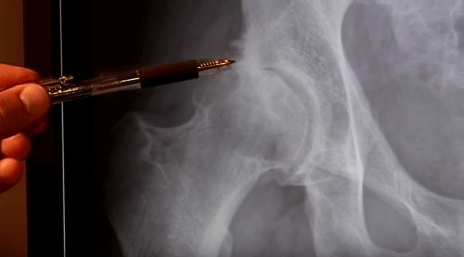Arthritis treatment from world-renowned physicians
Treatments for arthritis pain
Arthritis, the tenderness and inflammation of the joints, is a painful disease that restricts joint mobility and everyday activity. FOI orthopedic arthritis specialists develop individualized care plans to help patients overcome arthritic pain. Solutions range from exercise programs and oral medications to leading arthritis surgery procedures such as joint replacement and reconstruction.

Learn more about
Common arthritis conditions
Joint pain can range from mild to severe, creating disruptive levels of discomfort. Orthopedic arthritis specialists initiate their interventions based upon individualized care plans ensuring the most effective care:
- Acromioclavicular (AC) Joint Arthritis
- Ankle Arthritis
- Cervical Spine Arthritis
- Hand Rheumatoid Arthritis
- Hip Avascular Necrosis (AVN)
- Hip Arthritis
- Knee Arthritis
- Lumbar Spine Arthritis
- Osteoarthritis
- Sacroiliac Joint Arthritis
- Shoulder (Glenohumeral) Arthritis
- Shoulder Rheumatoid Arthritis
- Wrist, Hand & Finger Arthritis

Learn more about how the shoulder works and the potential treatment options available to you.
“I had almost full range of motion in 10 days, and in 14 days, I went out to the golf course and started hitting balls with no pain. It was the best thing I’d done in my life.” FOI Patient | Joint Replacement
Orthopedic arthritis surgery procedures
Our internationally renowned physicians specialize in providing results-driven arthritis surgery options to keep you active:
Arthritis of the thumb, also known as basal joint arthritis, occurs when the cartilage of the thumb joint wears away from the bone. Friction between the bones causes pain, swelling, decreased strength, and limited range of motion. Basal joint arthritis is typically initially treated with a combination of nonsurgical treatments, but severe cases call for surgical treatments such as joint fusion, joint replacement, osteotomy, or trapeziectomy.
Technologies and procedures for care and repair of the hip have evolved significantly in recent years. If oral medication and physical therapy are not effective, patients are now offered the latest advanced techniques, including minimally invasive arthroscopy, joint replacement (arthroplasty), joint resurfacing, and tibial trial sensor technology.
A reverse total shoulder replacement replaces a damaged shoulder joint with artificial components that reverse the structure of the shoulder. Reverse total shoulder replacement is used to treat conditions that cannot be treated with conventional total shoulder replacement or other procedures, such as a complete tear of the rotator cuff, especially when those injuries have led to an arthritic condition called cuff tear arthropathy. In 1998, Dr. Frankle of Florida Orthopaedic Institute performed the first reverse shoulder replacement in the United States.
With over 20 years of experience, performing thousands of ankle fusions, triple arthrodeses, subtalar fusions and over 300 total ankle replacements, Florida Orthopaedic Institute surgeons are leaders in the field. Because of the combined expertise of the foot and ankle surgeons, as well as their national reputation, patients are referred not only locally, but from all over the country. Many of the referrals are patients with significant post-surgical complications including infections, failed joint replacements, poorly positioned fusions, and non-healed fractures. These patients are sent to Florida Orthopaedic Institute for definitive solutions to their problems, and in most cases surgeons are able to improve their lives.
Your surgeon may recommend hip replacement (arthroplasty) or resurfacing if you have a painful condition that does not respond to nonsurgical treatment such as rest, physical therapy, and anti-inflammatory medications. Hip replacement removes and replaces damaged bone and cartilage with prosthetic components. Hip resurfacing replaces diseased and damaged portions of the hip with implants designed to restore joint function. Unlike a total hip replacement, a hip resurfacing trims the thigh bone top and caps it with a metal covering.
Total knee replacement surgery is a procedure that replaces the painful joint in your knee with space-age materials designed especially for your knee. After the first total knee replacement surgery was performed in 1968, knee replacement surgery has continually evolved in its usefulness, effectiveness, and overall success. Developments in surgical practices, coupled with innovative technologies, make the replacement of your total knee one of the most successful surgeries. Knee replacement procedures continue to grow, year over year, with almost a million successful replacements every year in the United States alone.
Osteoarthritis strikes when the shoulder joint wears thin. Rheumatoid arthritis is caused by inflammation of the lining of the joint that ultimately destroys the lining of the joint due to the chemicals produced. Degeneration and tearing of the tissues can also result.
If you have pain in your shoulder that limits your motion, your Florida Orthopaedic Institute shoulder specialists may recommend replacing the head of the bone or the entire socket. As always, your surgeon will discuss the best treatment options for your situation.



